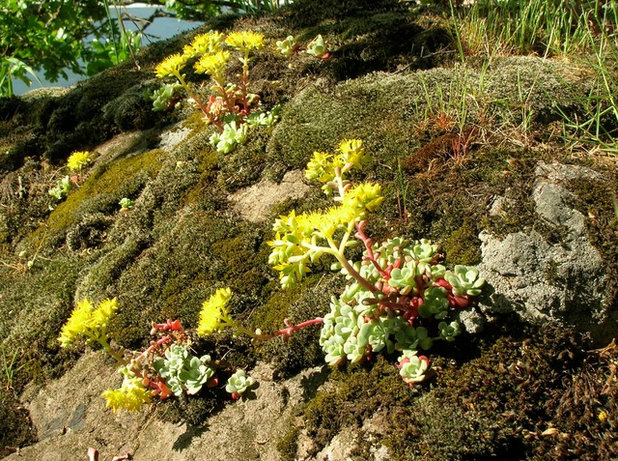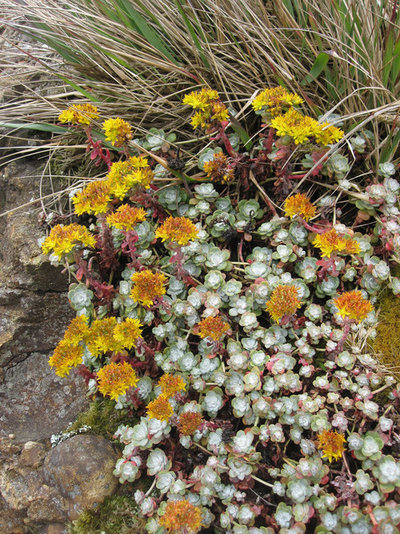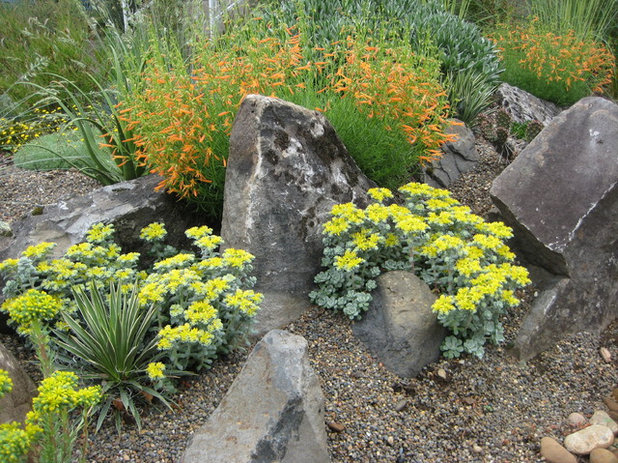Pacific Northwest native plants are generally thought of as lush, leafy and green, but in fact, there is a wide world of underutilized succulent plants — even cacti — that are native to our region. S
edum spathulifolium is one of the most widespread and easy-to-grow of our native succulents, and is a wonderful choice for native-plant lovers.
Sedum spathulifolium (also known as broadleaf stonecrop) is a tough, cold-hardy and charming garden contributor. While small, this succulent is a powerhouse, with evergreen foliage, wind and drought tolerance, and showy sprays of intense acid-yellow flowers in May. As a bonus, the plentiful flowers are attractive to pollinating insects.

Kate Bryant
Botanical name: Sedum spathulifoliumCommon names: Broadleaf stonecrop
Origin: Native to western North America from British Columbia to Southern California, in rocky habitats on coastal and inland hills and mountains
Where it will grow: Hardy to -5 to 20 degrees Fahrenheit (USDA zone 6; find your zone)
Water requirement: Thrives in slightly damp or very dry, well-drained, sandy soil; once it’s established, no supplemental water is required in summer
Light requirement: Partial to full sun
Mature size: The foliage reaches approximately 2 inches tall; with flowers, approximately 4 to 5 inches tall
Benefits and tolerances: Blossoms provide insect nectar and pollen; it produces seeds in fall
Seasonal interest: Acid-yellow sprays of starry flowers atop short flower stems in May
W
hen to plant: Fall to spring is ideal, but broadleaf stonecrop isn’t fussy
Shown: Growing in the wild on a rocky outcrop above the Willamette River in Oregon City, Oregon

Xera Plants
 Distinguishing traits.
Distinguishing traits. Pretty acid-yellow flowers appear on short stems in May, providing nectar for insects including (in California) the San Bruno elfin butterfly. The foliage is arranged in tidy little rosettes — a charming look in rockeries, containers and anywhere the plump little succulent leaves can be admired up close.
How to use it. Sedum spathulifolium is evergreen, providing interest in the winter garden, as well as subtle seasonal color shifts (ruddier color tints in summer when drought stressed; greener tones in winter). Drought-tolerant
Sedum spathulifolium is perfect for an out-of-the-way area of the garden, beyond the reach of the hose or watering system. It’s especially pretty tucked in the front of a dry border, in crevices between and on top of stones or walls, and in containers both small and large.
Photo by Alex Lomas
 Planting notes. Sedum spathulifolium
Planting notes. Sedum spathulifolium is a tough little evergreen ground cover that thrives in well-drained soil and, in fact, barely needs soil at all to grow. It’s at its best in full sun but also grows well in partial sun (it’s just a bit lankier). It can take wind and reflected heat. Plant it in full sun for the best flowering and for the best blue color in leaves in blue-foliaged cultivars. Grown in full sun, the foliage also picks up reddish or purple tints in winter.
Selections include
Sedum spathulifolium ‘Cape Blanco’ (zone 5b), shown here, with grayish-white foliage (it’s the winner of the Royal Horticultural Society’s Award of Garden Merit); ‘Carnea’ (zone 5a), with especially pretty, reddish-pink-tinted foliage in winter; and ‘Rogue River’ (zone 5b), a Xera Plants selection with marvelously blue foliage.
Photo by Flickr user Rosewoman

Xera Plants
Shown: Sedum spathulifolium ‘Cape Blanco’ growing among rocks and other drought-tolerant plants in a Portland, Oregon, garden.
See guides to growing other succulents





